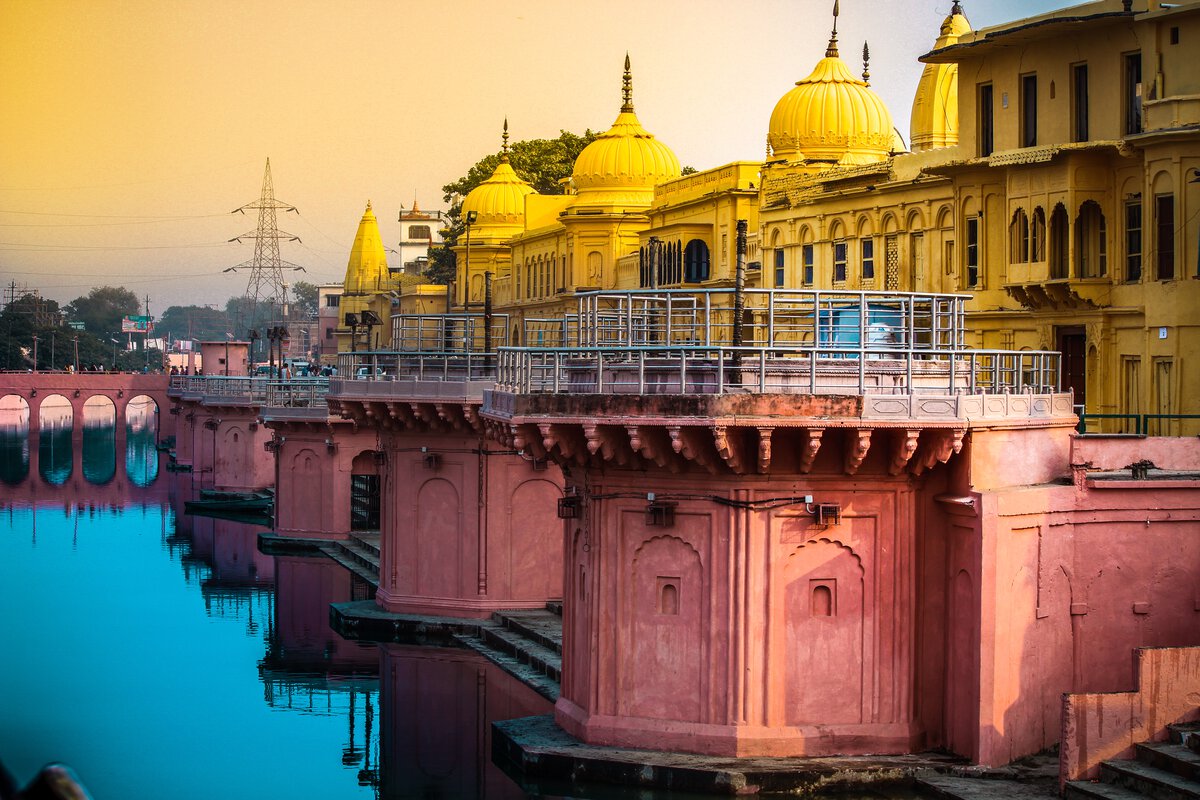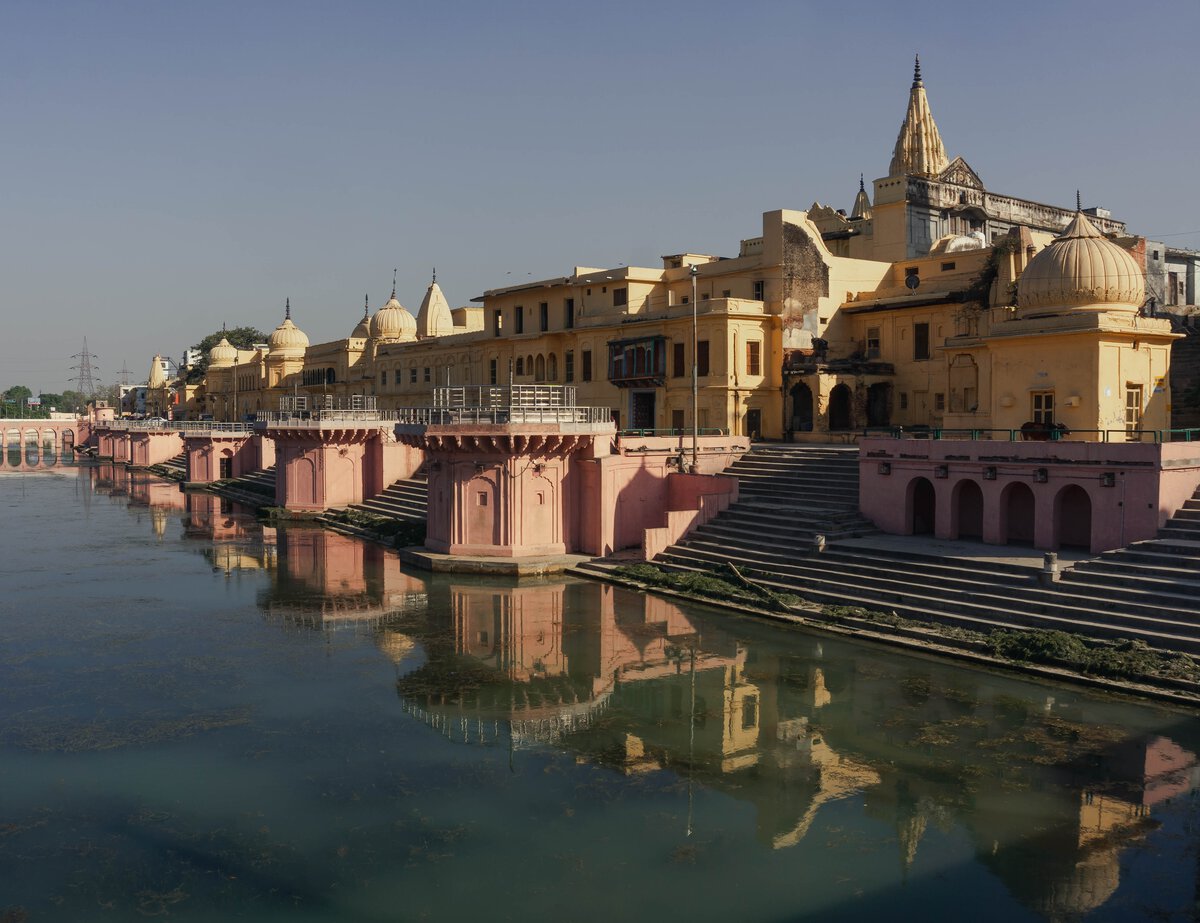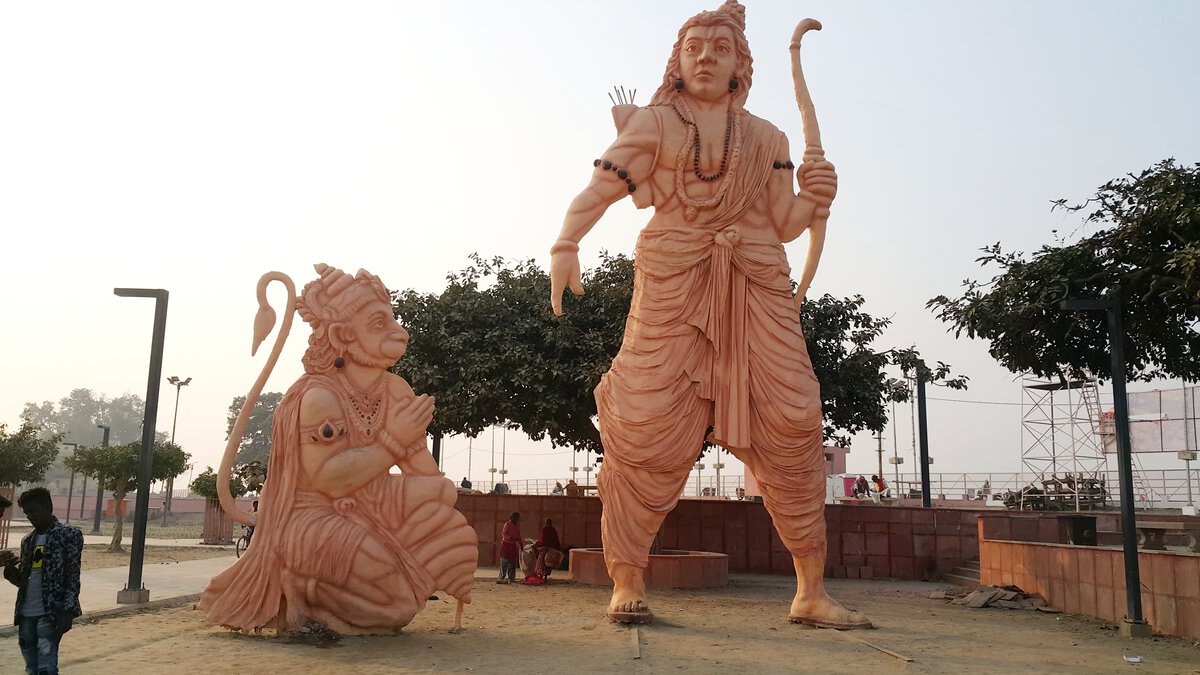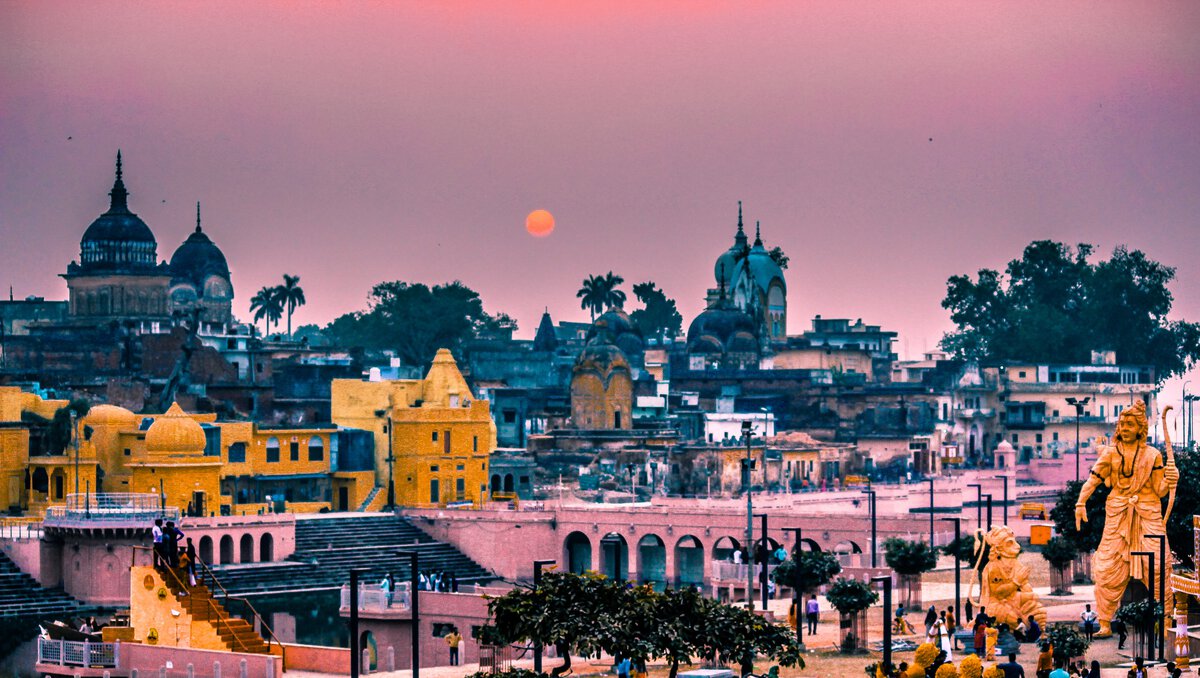January 05, 2024
The Magnificent Ram Temple of Ayodhya: Experience Its Grandeur In 2024
CM Content Team


View all
140+
Resorts
January 05, 2024
CM Content Team
The Ayodhya Ram Mandir holds an exceptional place in the cultural and religious tapestry of India. The city, situated on the banks of the Sarayu River, is believed to be the birthplace of Lord Ram, one of the most revered deities in Hinduism. For centuries, Ayodhya has been a pilgrimage destination for millions of devotees from around the world.
Now, with the new temple of Ayodhya on the sacred Ram Janmabhoomi, devotees and tourists can come to visit a grand and glorious place that exudes a divine atmosphere.
Let’s explore the history, architecture, and significance of the Ayodhya Ram Temple.

Ayodhya, one of the seven sacred cities in Hinduism, has a rich history dating back to the ancient Indian epic, Ramayana. The city was the capital of the kingdom of Kosala, ruled by the Suryavanshi dynasty, to which Lord Rama belonged. Ayodhya is believed to have been home to several temples over the years, including the original Ram Temple, which was built to mark the birthplace of Lord Ram.
The grand temple at Ram Janmabhoomi has captured the interest of millions, as it is set to be a symbol of cultural and religious significance and one of the important places to visit in Ayodhya.
This Temple of Ayodhya will follow the distinctive Nagara style of temple architecture, adding to the anticipation. The Shri Ram Janmbhoomi Teerth Kshetra's release of the proposed model has heightened the excitement for this significant project.

The Indian landscape features a diverse array of architectural styles that have evolved under regional rulers. The Nagara style, predominantly found in northern India, further branches into various schools like Odisha, Khajuraho, Solanki, etc. These regional variations contribute to the rich tapestry of temple architecture across the country.
Delving into the Nagara style of the Ayodhya Ram Mandir’s architecture requires an understanding of its fundamental elements, each carrying spiritual significance. These elements include the Garbhagriha, Mandapa, Shikhara, and Vahana. While common to Hindu temple architecture, each plays a unique role in shaping the sacred space.
In the Nagara style, temples are often constructed on an elevated platform called jagati, and Mandapas are situated in front of the Garbhagriha. These Mandapas are adorned with Shikharas, with the tallest one positioned above the Garbhagriha. The absence of elaborate boundary walls or gateways distinguishes Nagara-style temples from their South Indian counterparts.

The stones from the Banshi mountains in Rajasthan are reported to be used for the construction of the Ayodhya Ram temple. The Ayodhya Ram temple's impressive specifications include a towering height of 161 feet and three storeys. Moreover, the temple's design meticulously adheres to Vastushastra and Shilpishastra, ancient Indian architectural and sculptural treatises that provide guidelines for sacred structures.

When comparing the Ram Temple of Ayodhya with other temples built in the Nagara style, like the Kandariya Mahadeo temple in Khajuraho, Madhya Pradesh, it becomes apparent that there is a consistent similarity in architectural features. The proposed design for the Ayodhya Ram temple showcases a similar latina-style Shikhara, reflecting the enduring principles of Nagara architecture.

In contrast to South Indian temples that generally feature a stepped pyramid rising linearly (Vimana), Nagara-style temples have Shikharas not only over the main shrine but also over the Mandapas. In the Ayodhya Ram temple's proposed design, the Shikharas over the Mandapas exhibit a square base and a rectilinear outline, known as the phamsana-style Shikhara. This unique design adds an artistic dimension to the architectural composition.
The temple is envisioned to have five Mandapas between the Garbhagriha and the entrance, including kudu mandapa, nritya mandapa, and rang mandapa in that order, with kirtan mandapa and prarthana mandapa on either side. A staggering 360 pillars support the entire structure, each contributing to the temple's structural integrity and visual grandeur, making it one of the most fascinating places to visit in Ayodhya.

Ayodhya Ram Temple, an expansive marvel over 70.5 acres, is designed to exude divine grandeur. With meticulous planning, the temple features 44 gates, 18 of which boast intricately crafted doors, and 14 are adorned with gold, symbolising its sacred significance.
The temple is accessible through three distinct paths – Ram Janmabhoomi path, Bhakti path, and Ram path – each offering devotees a spiritual journey towards the sanctum.
The design seamlessly blends the grandiosity of the temple with practical considerations, embodying both the sanctity of the sacred site and the comfort of the devotees.
The Ayodhya Ram Mandir ensures convenience for devotees by allowing entry through a single gate, simplifying the pilgrimage experience.
Following the traditional principles of old temples in Sanatan Dharma, two 35-foot high gateways stand 600 meters before the birthplace perimeter. A 75-foot wide road, flanked by footpaths, leads pilgrims towards the temple.
The path is adorned with nine canopies, adding to the visual appeal. Bag scanners with 16 counters ensure security, blending tradition with modern safety measures.
You can visit the Ram Temple of Ayodhya in the following ways.
The nearest airport to Ayodhya is the Faizabad Airport (IATA: IXD), also known as Ayodhya Airport. Alternatively, you can fly into the Chaudhary Charan Singh International Airport (IATA: LKO) in Lucknow, which is approximately 130 kilometres away from Ayodhya. From the airport, you can hire a taxi or use other local transportation options to reach Ayodhya.
Ayodhya has a railway station known as Ayodhya Junction (AY), and it is well-connected to major cities across India. You can check the train schedules and book tickets to Ayodhya from your location. Once you arrive at the Ayodhya Junction, you can take a taxi, auto-rickshaw, or other local transportation to reach the Ram Mandir.
Ayodhya is well-connected by road, and you can reach there by bus, car, or other private vehicle. The city has a good network of roads, and you can use national highways to reach Ayodhya. You can also hire a taxi or use interstate bus services.
Once in the cities, you can use local transportation options like auto-rickshaws, cycle-rickshaws, or taxis to reach the Ayodhya Ram Mandir.

The Ram Temple of Ayodhya is an architectural marvel that holds deep spiritual and cultural significance for the people of India. Its construction marks a new chapter in the history of Ayodhya, symbolising faith.
As the temple stands tall in the sacred city, it serves as a reminder of India's rich cultural heritage and the importance of preserving and celebrating our shared history. With the Ram Temple set to become a major pilgrimage destination, Ayodhya is poised for a bright future, paving the way for economic development, cultural resurgence, and religious harmony.
The construction of the Ram Temple is expected to revitalise the city of Ayodhya, transforming it into a major cultural and religious hub, drawing millions of pilgrims annually, making it one of the largest religious gatherings in the world.
The temple complex, along with the associated facilities, will provide numerous opportunities for economic growth and development in the region. The influx of pilgrims and tourists will boost local businesses, create employment opportunities, and improve infrastructure in the area.
Moreover, the Ram Temple of Ayodhya is likely to inspire the preservation and restoration of other cultural and historical sites in and around the city. This will help conserve India's rich heritage and promote cultural tourism, further benefiting the local economy.
Mahindra Holidays & Resorts India Ltd. (MHRIL), a part of Leisure and Hospitality sector of the Mahindra Group, offers quality family holidays primarily through vacation ownership memberships and brings to the industry values such as reliability, trust and customer satisfaction. Started in 1996, the company's flagship brand ‘Club Mahindra’, today has over 300,000 members , who can holiday at 140+ resorts in India and abroad.
We use cookies to personalise content and to provide you with an improved user experience.By Continuing to browse this site you consent to the use of cookies.Please visit our cookie policy for further details.

Welcome to ClubMahindra.com In order to provide a personalised experience for you, we use cookies to enable some website functionality. Cookies help us see which articles most interest you; allow you to easily share articles on social media channels; permit us to deliver content personalised to your interests and locations; along with many other site benefits. For more information, please review our Cookie Policy
When you visit any website, it may store or retrieve information on your browser, mostly in the form of cookies. This information might be about you, your preferences or your device and is mostly used to make the site work as you expect it to. The information does not usually directly identify you, but it can give you a more personalized web experience. Because we respect your right to privacy, you can choose not to allow some types of cookies. Click on the different category headings to find out more and change our default settings. However, blocking some types of cookies may impact your experience of the site and the services we are able to offer.
Because we respect your right to privacy, you can choose not to allow some types of cookies and you have the right to withdraw your consent by send a mail to email id [email protected]
These cookies are essential in order to enable you to move around the site and use its features, such as accessing secure areas of the site. Without these cookies, services you have asked for cannot be provided.
These cookies allow us to employ data analytics so we can measure and improve the performance of our site and provide more relevant content to you. These cookies don't collect information that identifies a visitor down to an individual level that is available to us. These cookies are not passing personally identifiable information to any external third party other than in limited cases when we engage a service provider to act on our behalf but who is then unable to use the data for their own purposes.
Performance cookies are generally third-party cookies from vendors we work with or who work on our behalf that collect information about your visit and use of the Club Mahindra website, for instance which pages you visit the most often, and if you get error messages from web pages. These cookies don't collect information that identifies a visitor. All information these cookies collect is anonymous and is only used to improve your overall experience on how the website works. Third party vendors may have access to this data and may use it to improve their overall services and offerings.
Functionality cookies allow a site to remember choices you make (such as your user name, language or the region you are in) and provide more enhanced, personal features. These cookies cannot track your browsing activity on other websites. They don't gather any information about you that could be used for advertising or remembering where you've been on the Internet outside our site.
Third-party advertising and social media cookies are used to (1) deliver advertisements more relevant to you and your interests; (2) limit the number of times you see an advertisement; (3) help measure the effectiveness of the advertising campaign; and (4) understand people's behaviour after they view an advertisement. They are usually placed on behalf of advertising networks with the site operator's permission. They remember that you have visited a site and quite often they will be linked to site functionality provided by the other organization. This may impact the content and messages you see on other websites you visit. If you do not allow these cookies you may not be able to use or see certain these sharing tools content on our website.